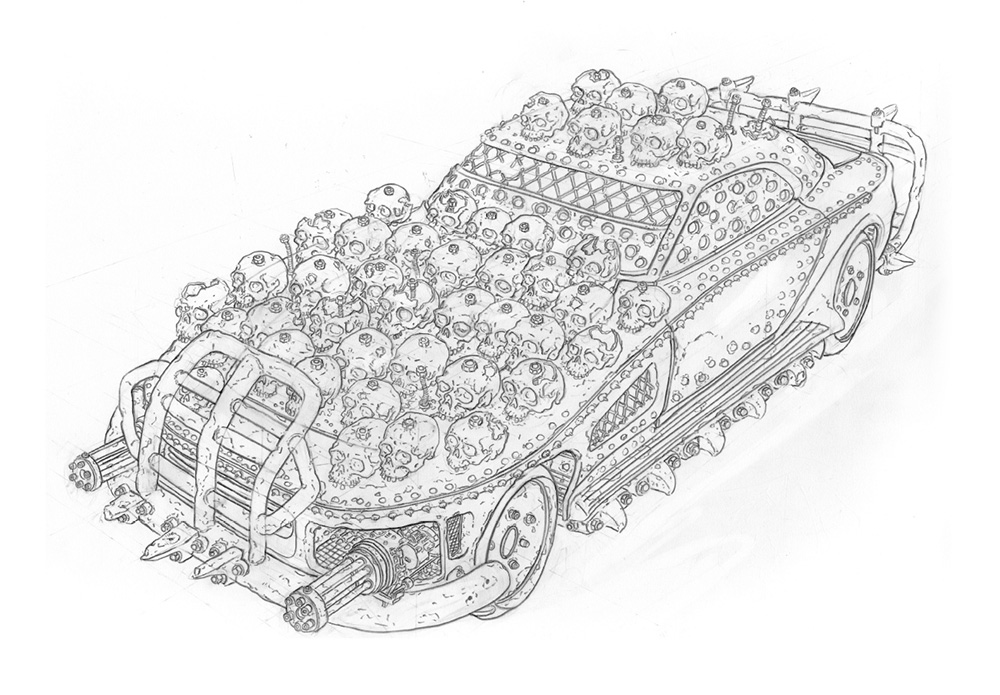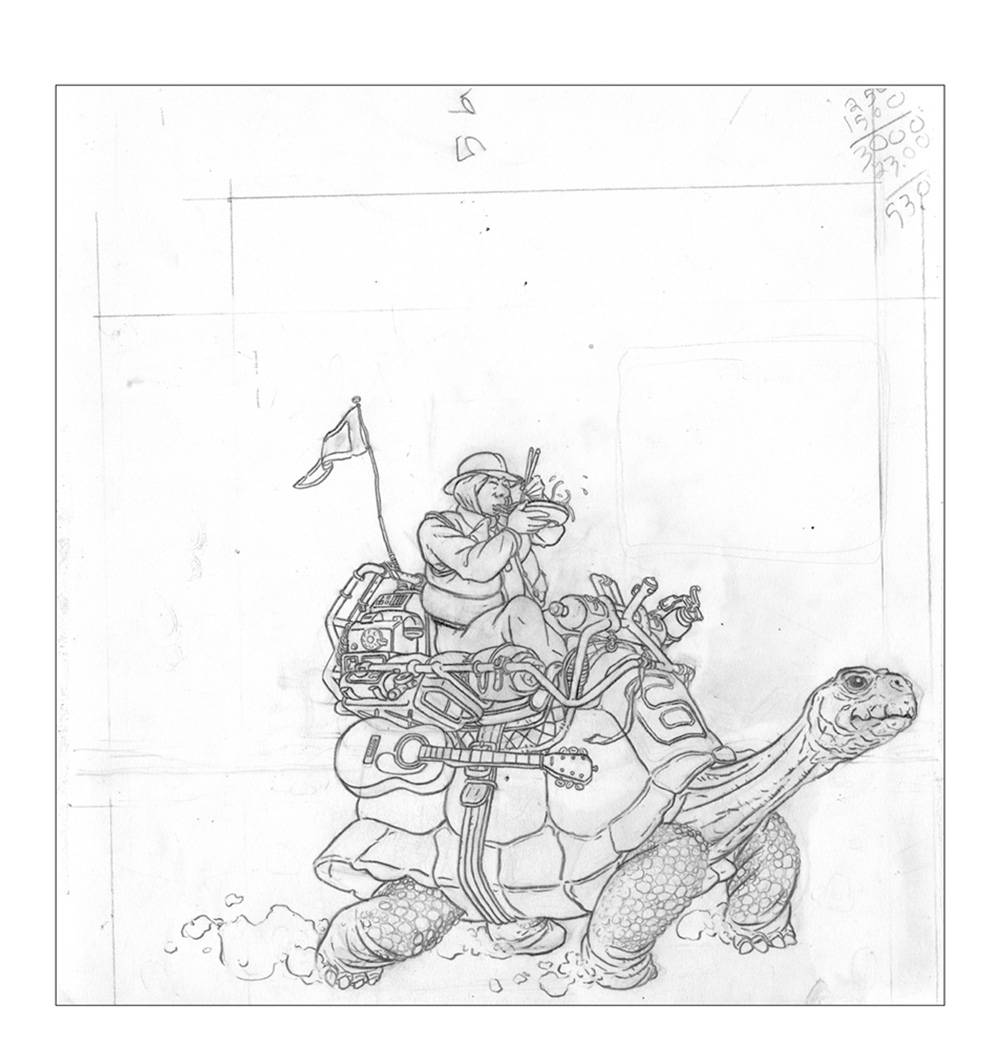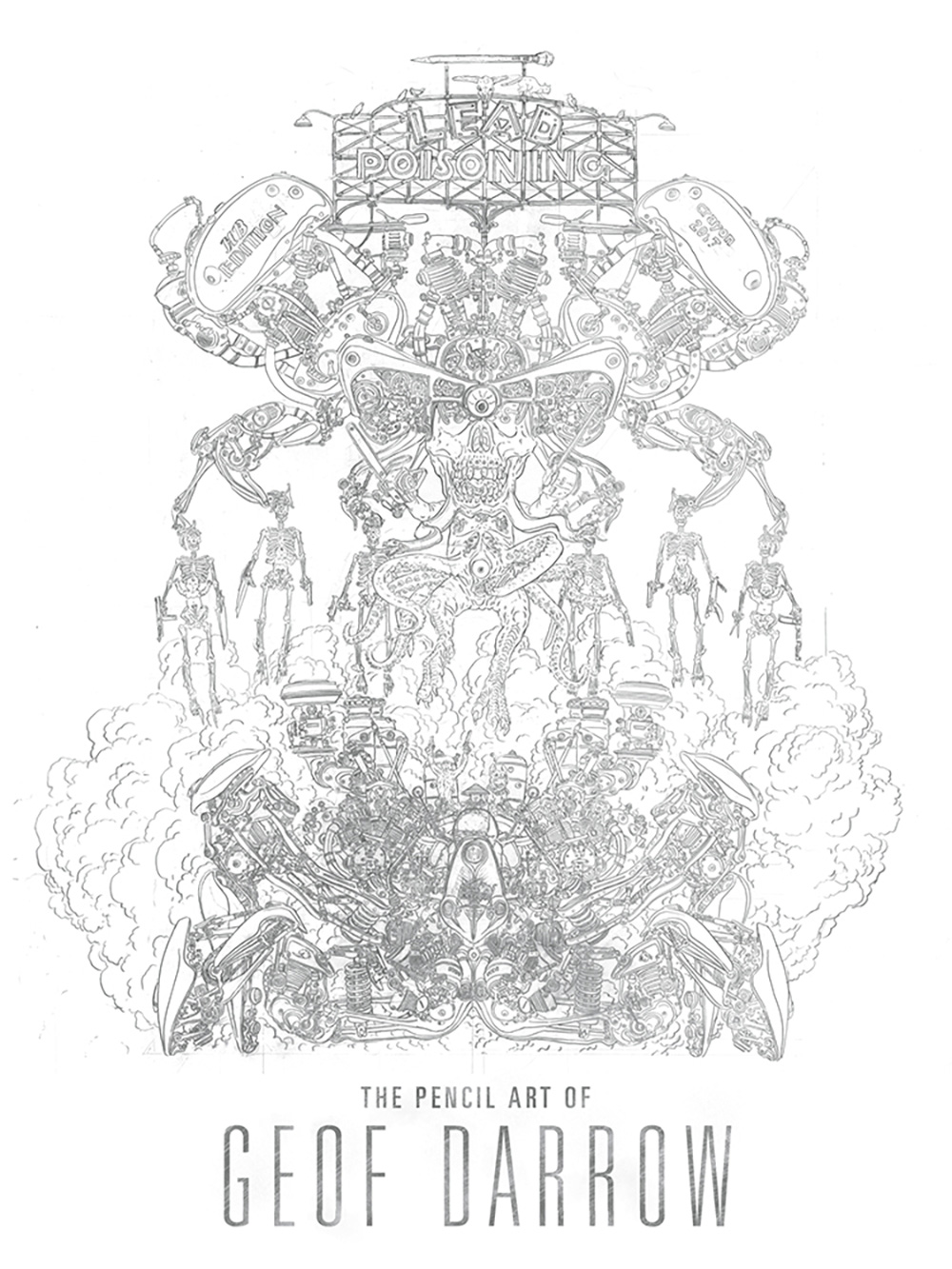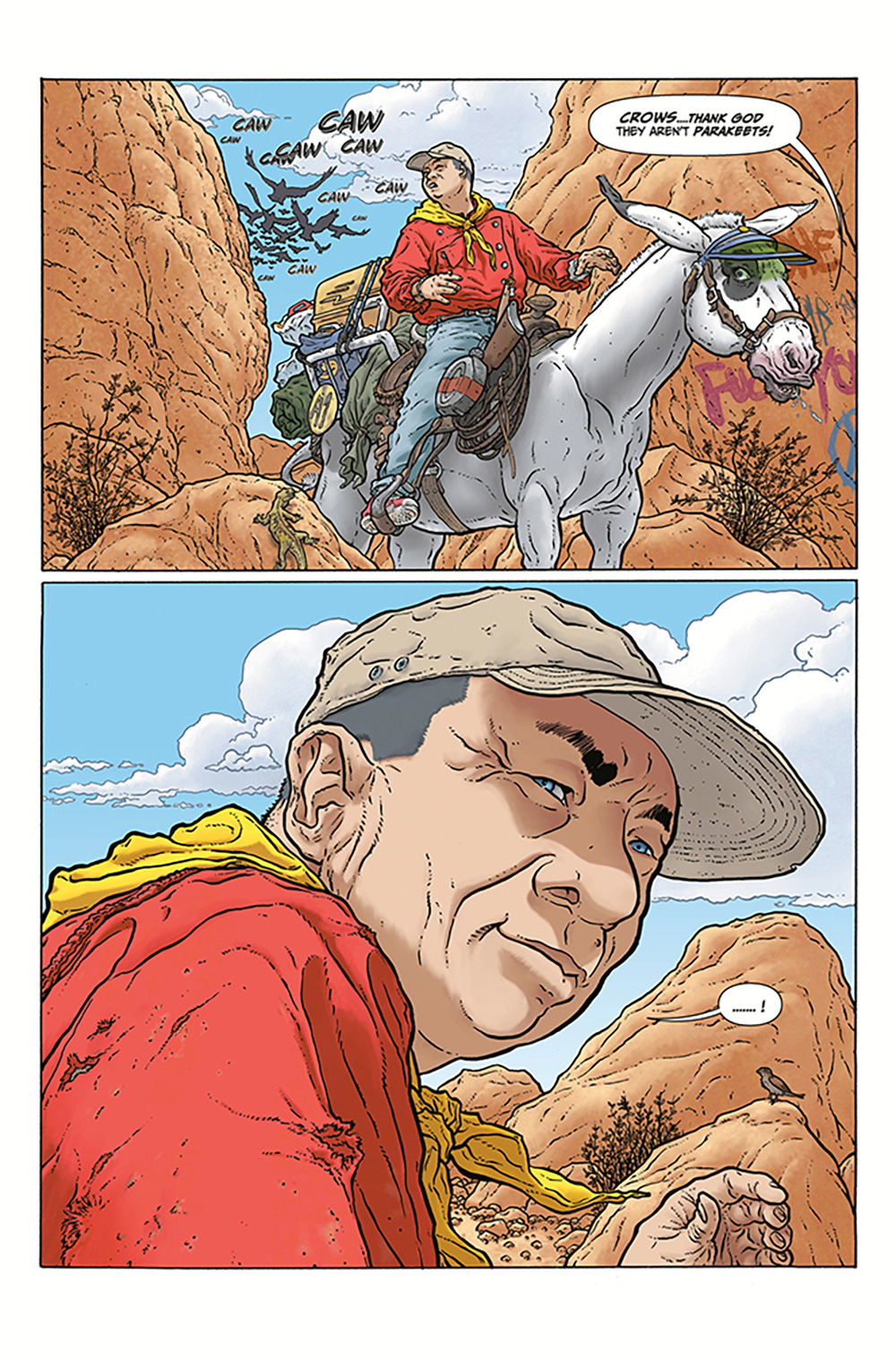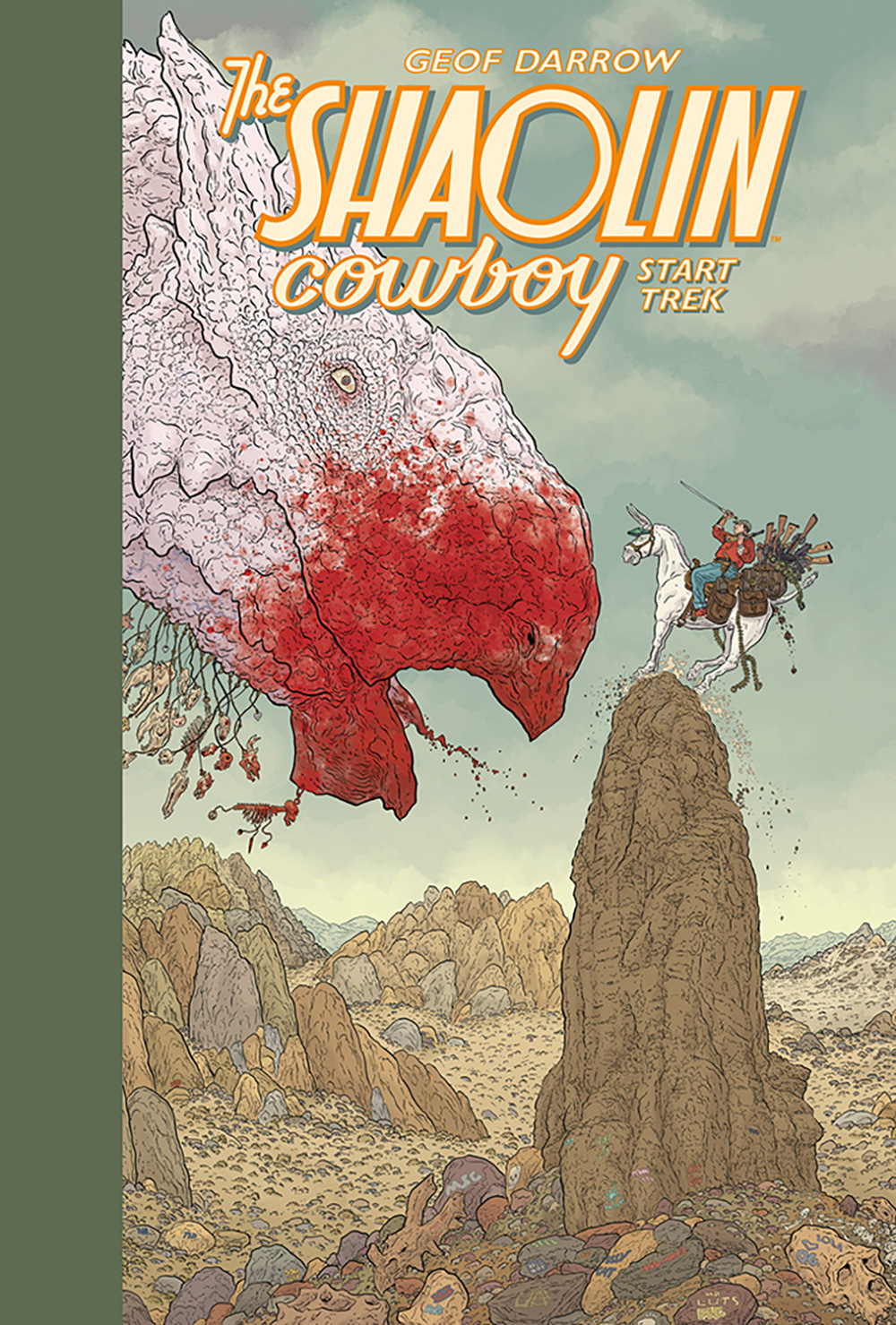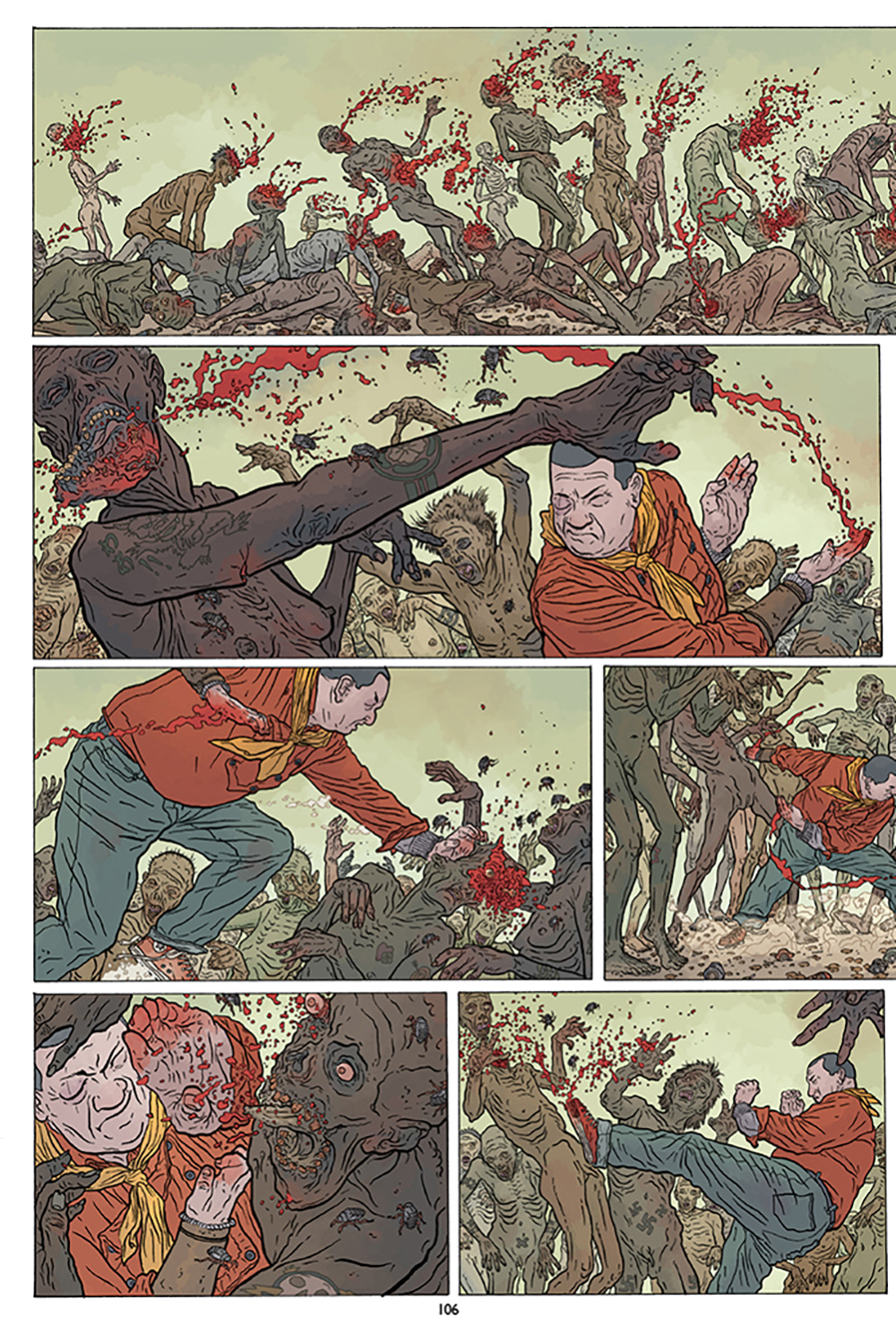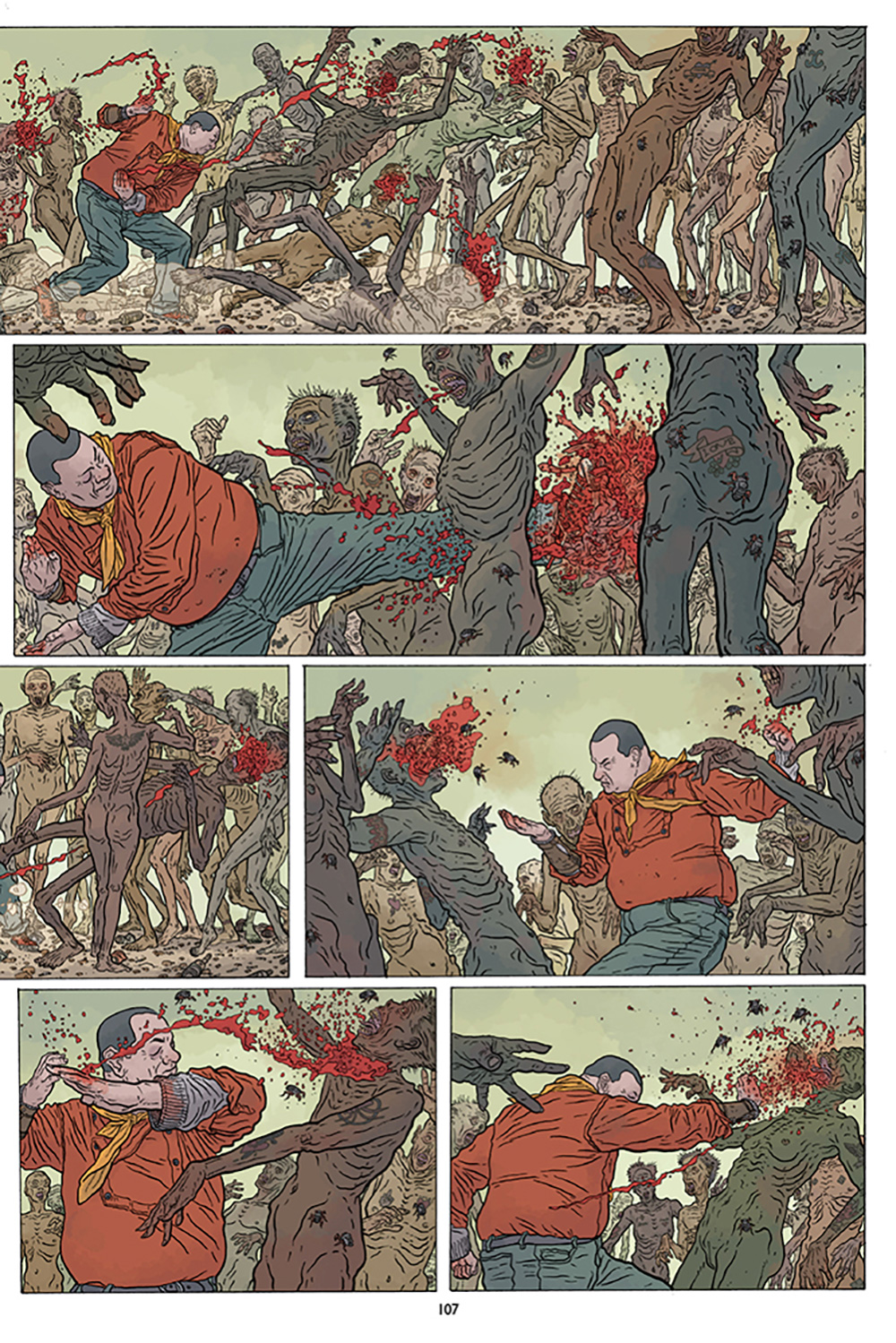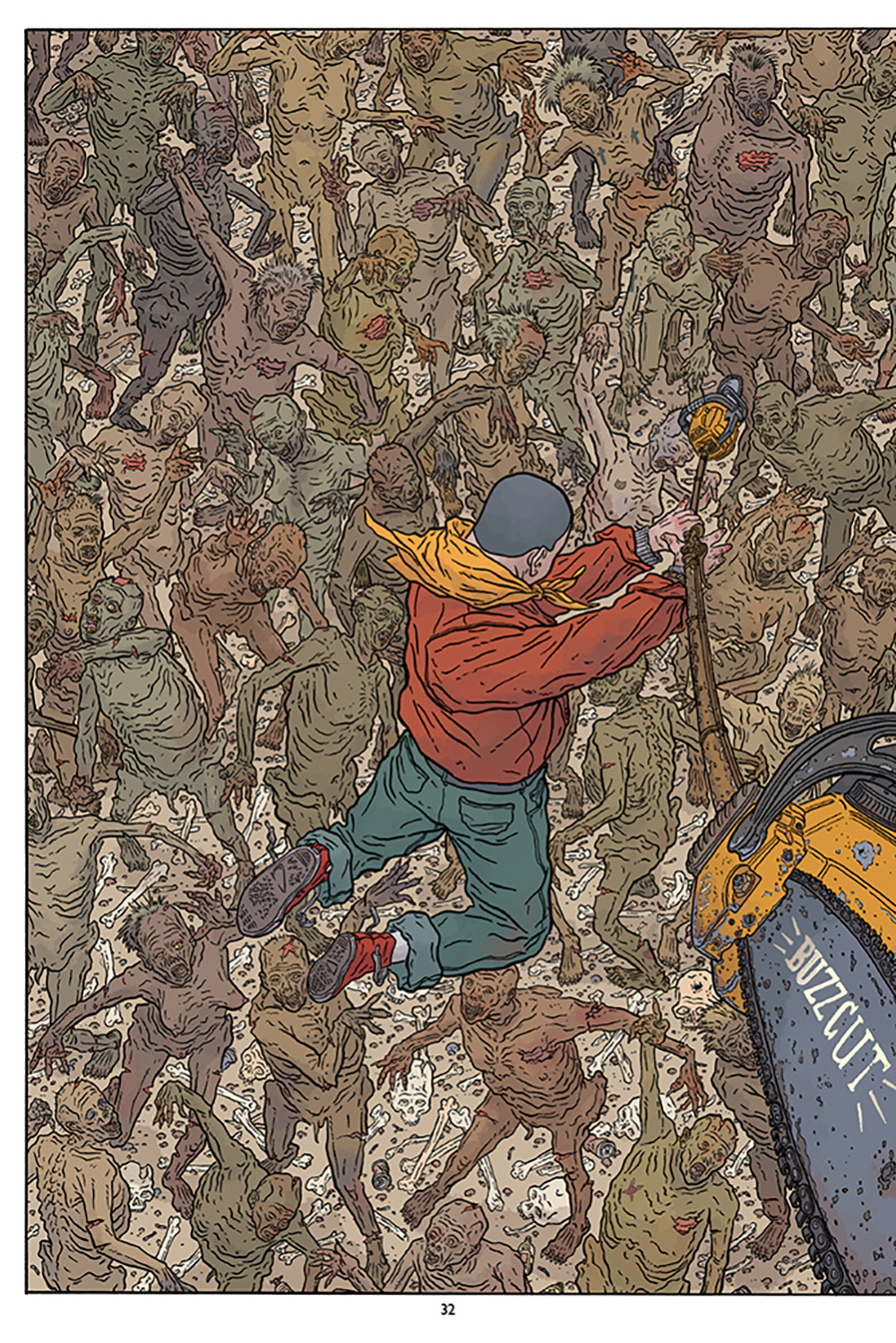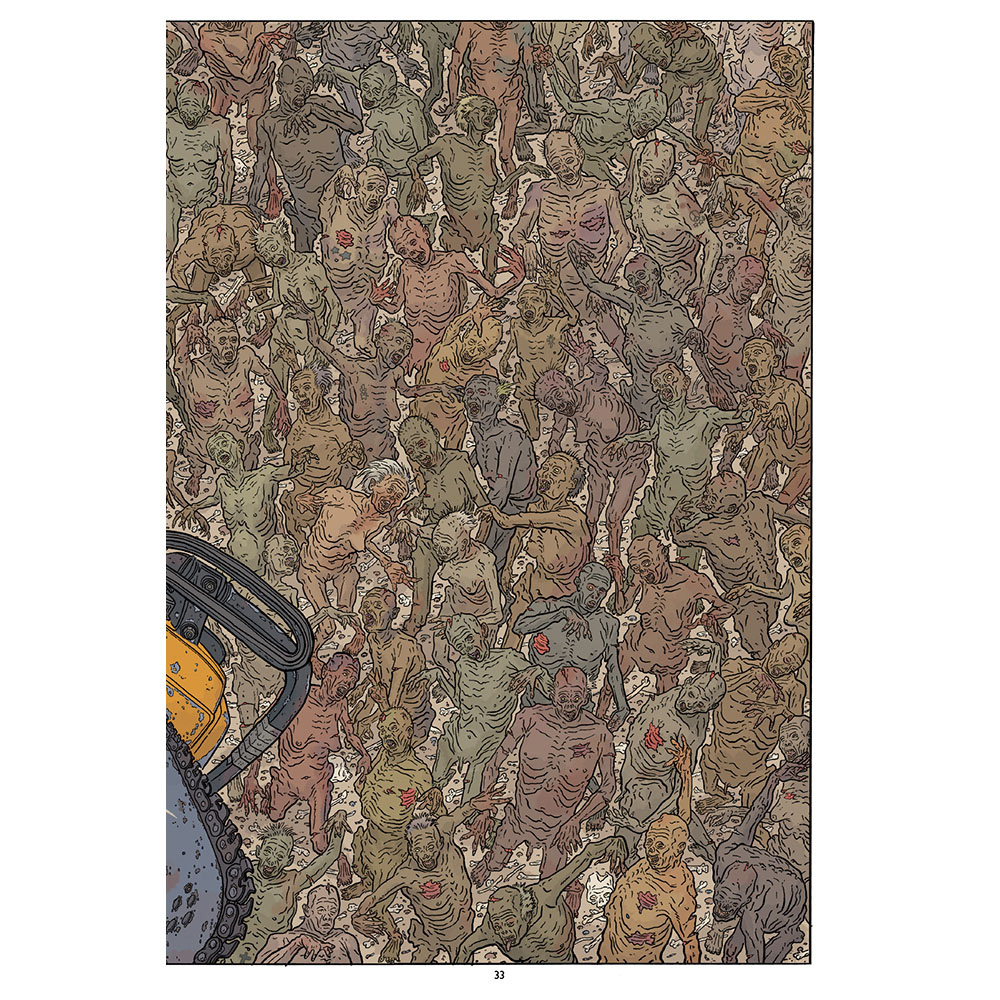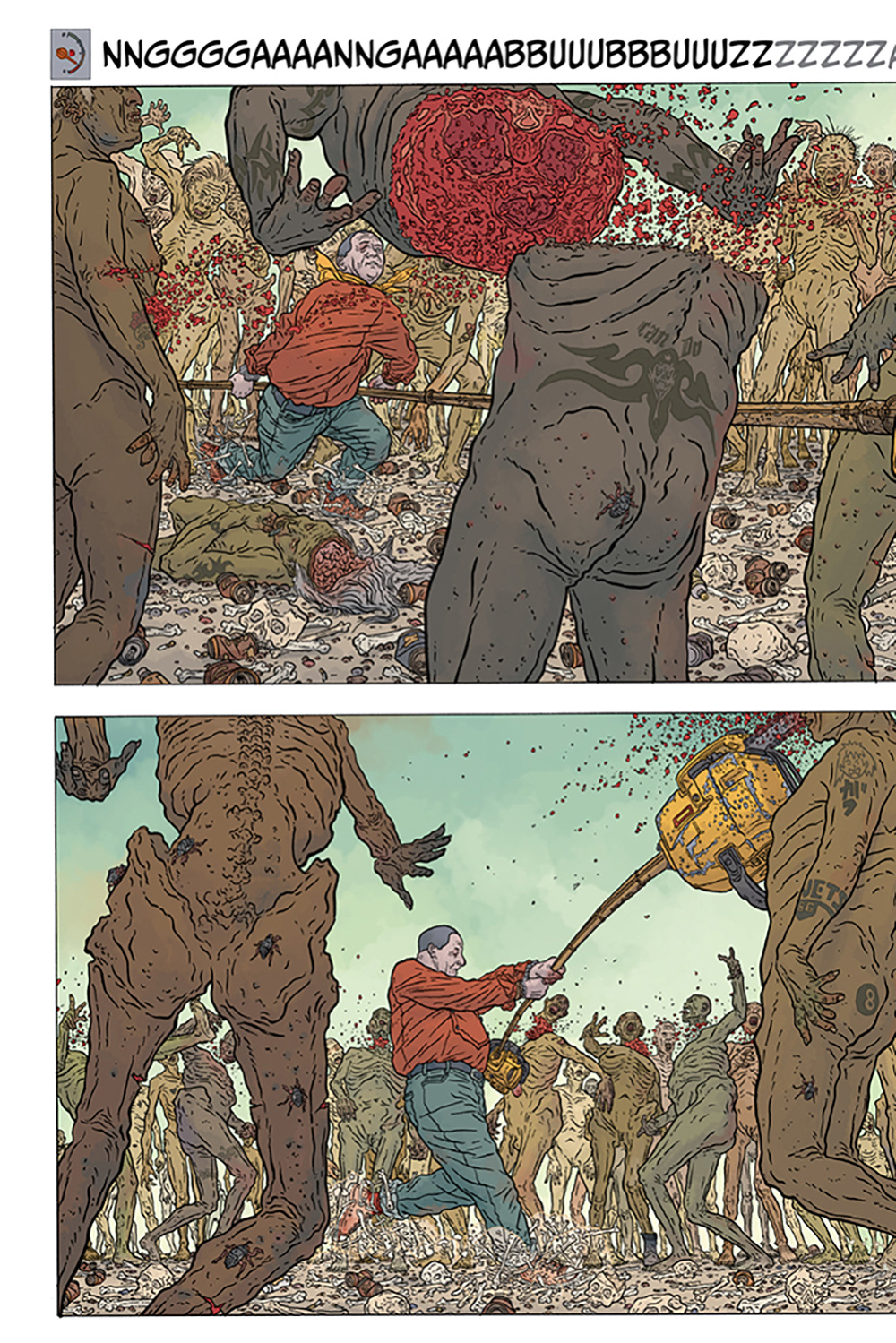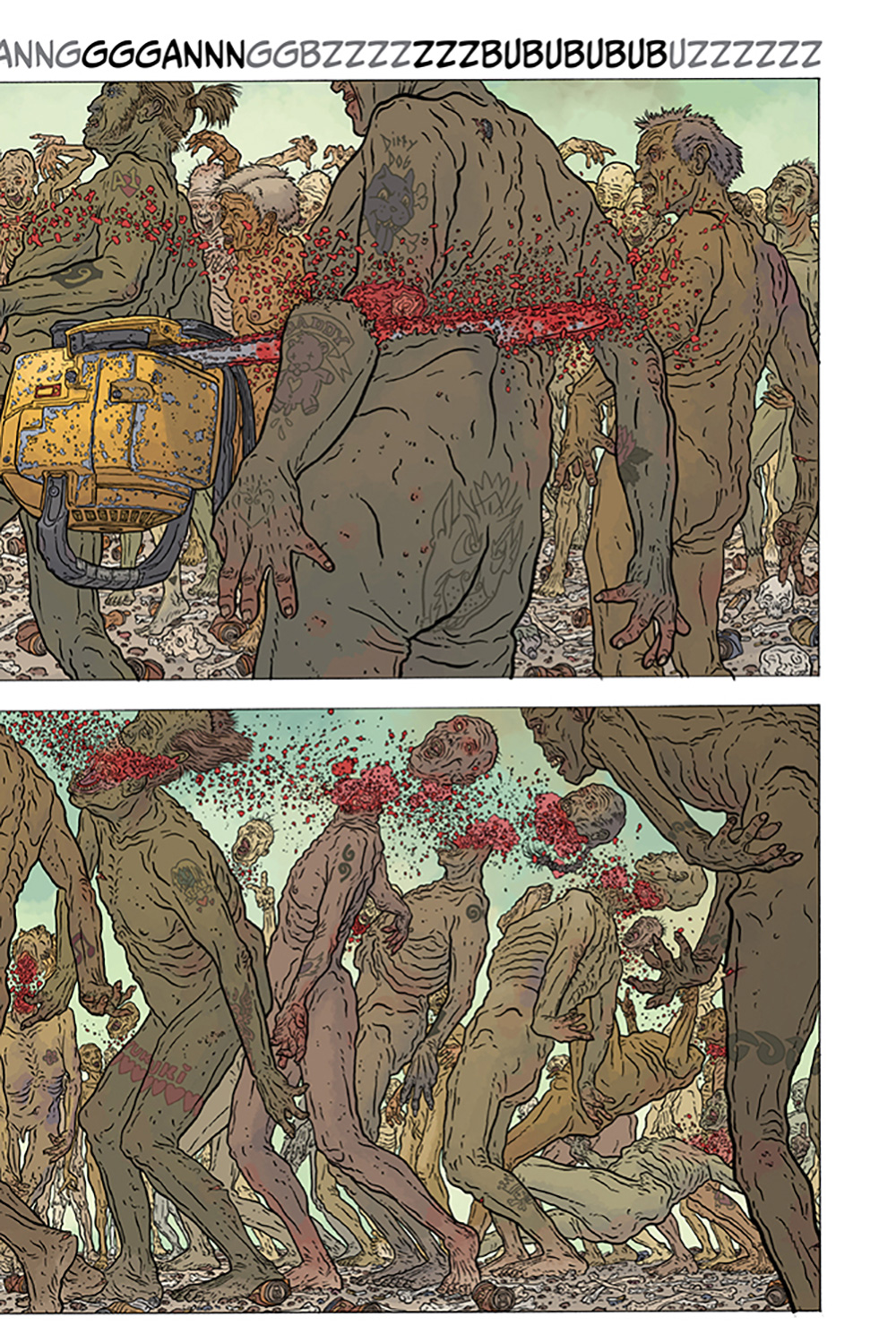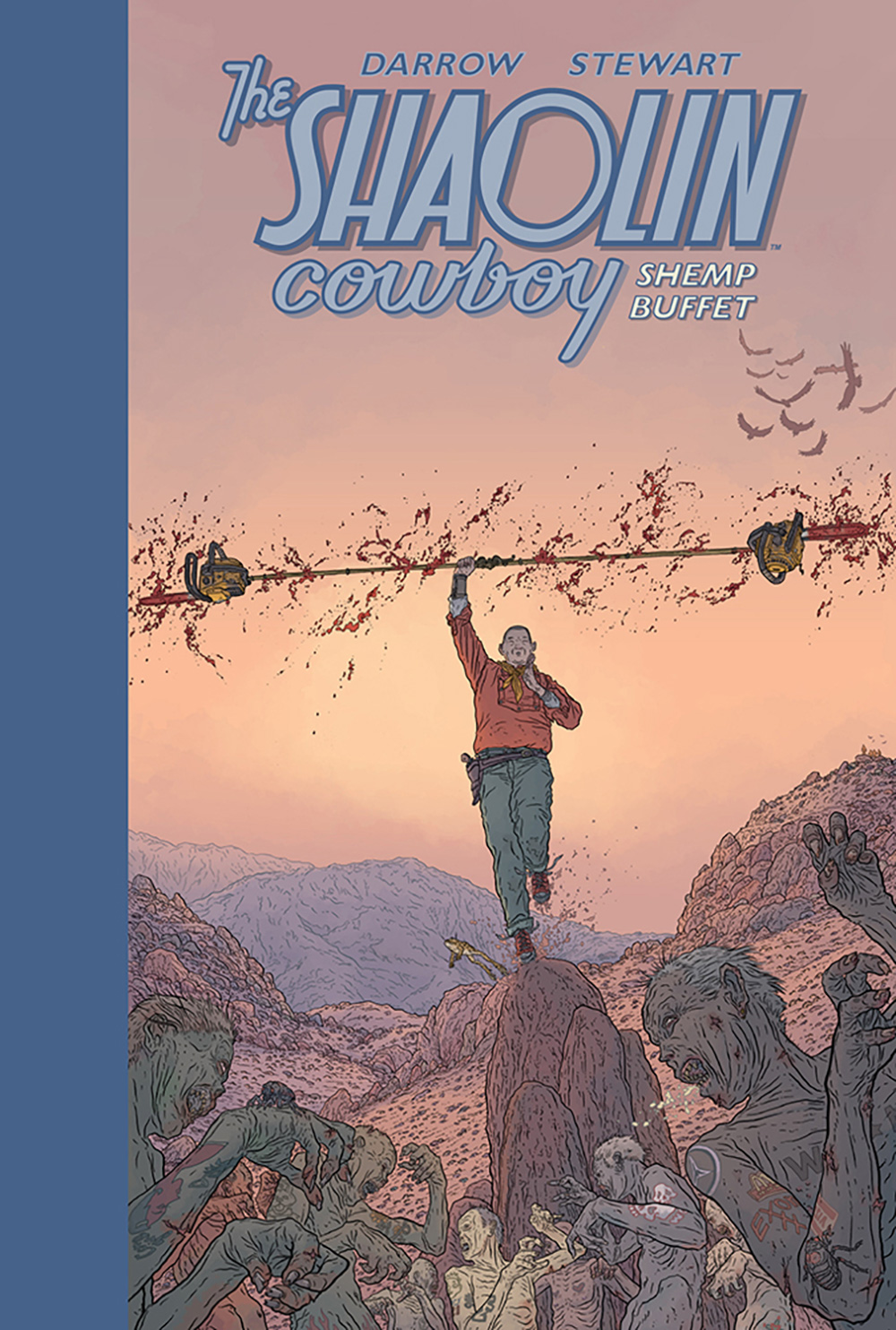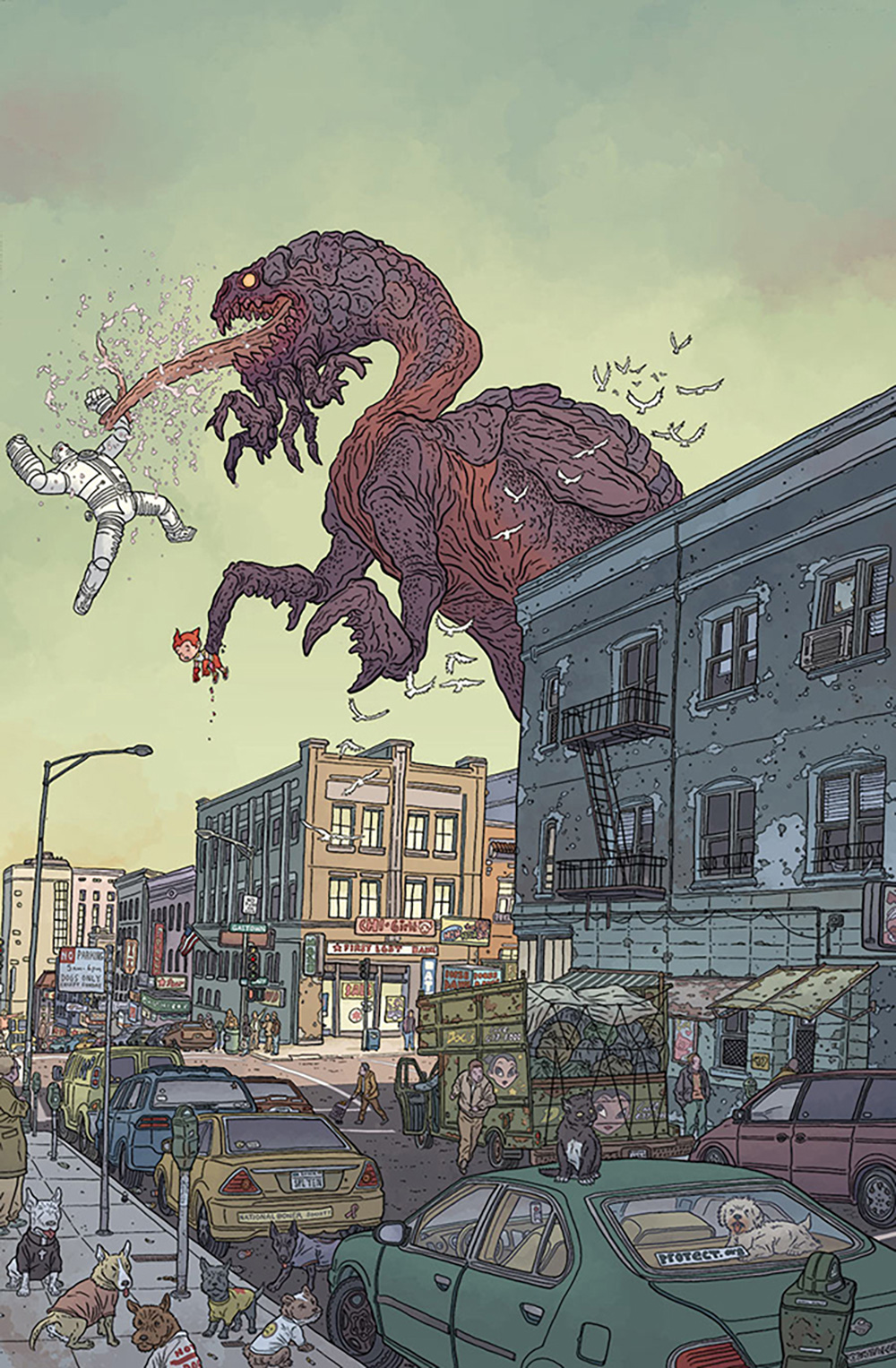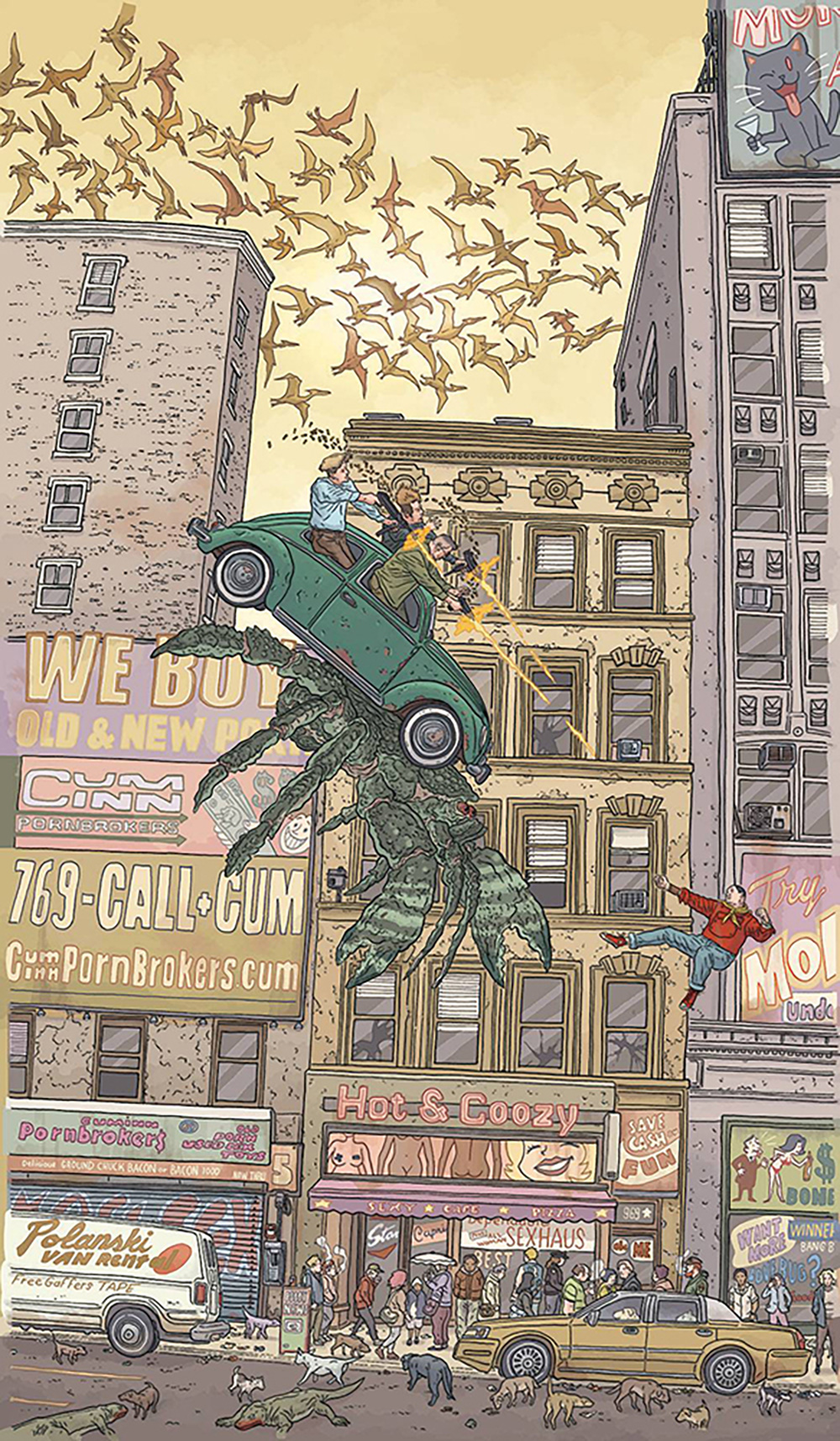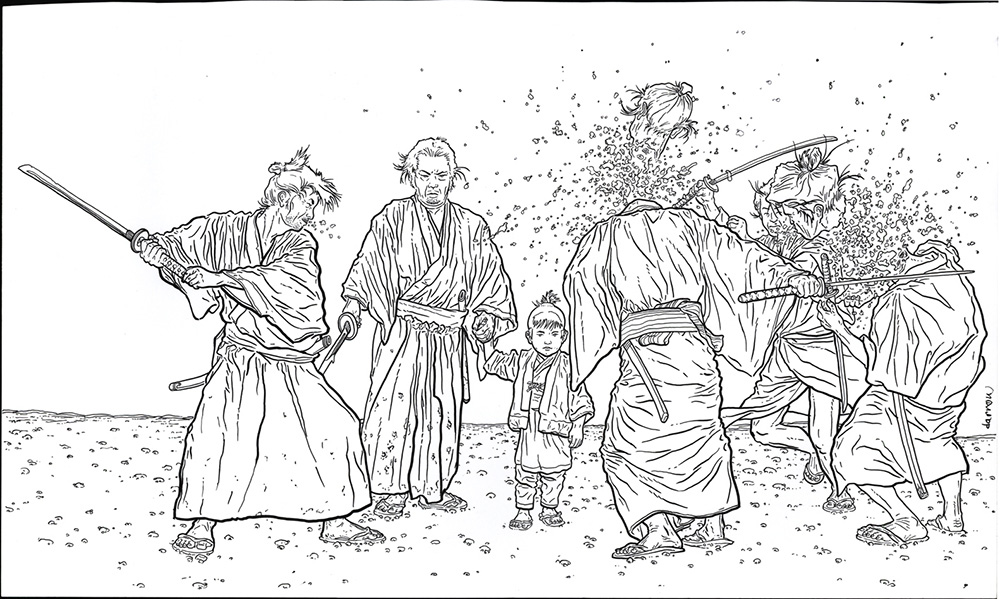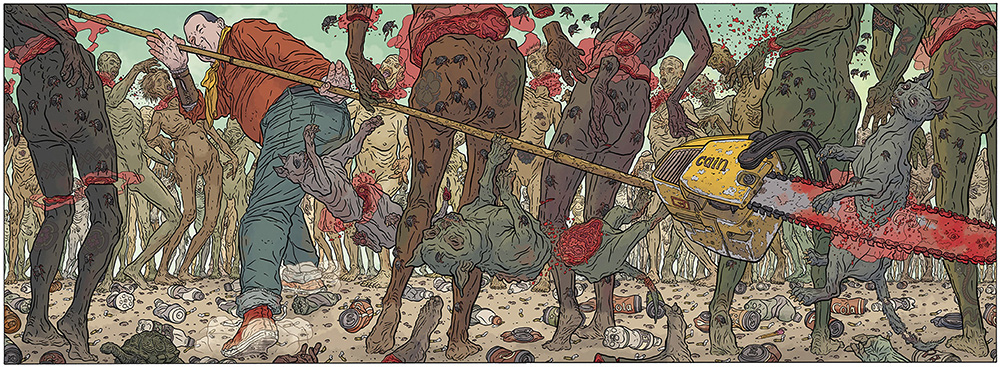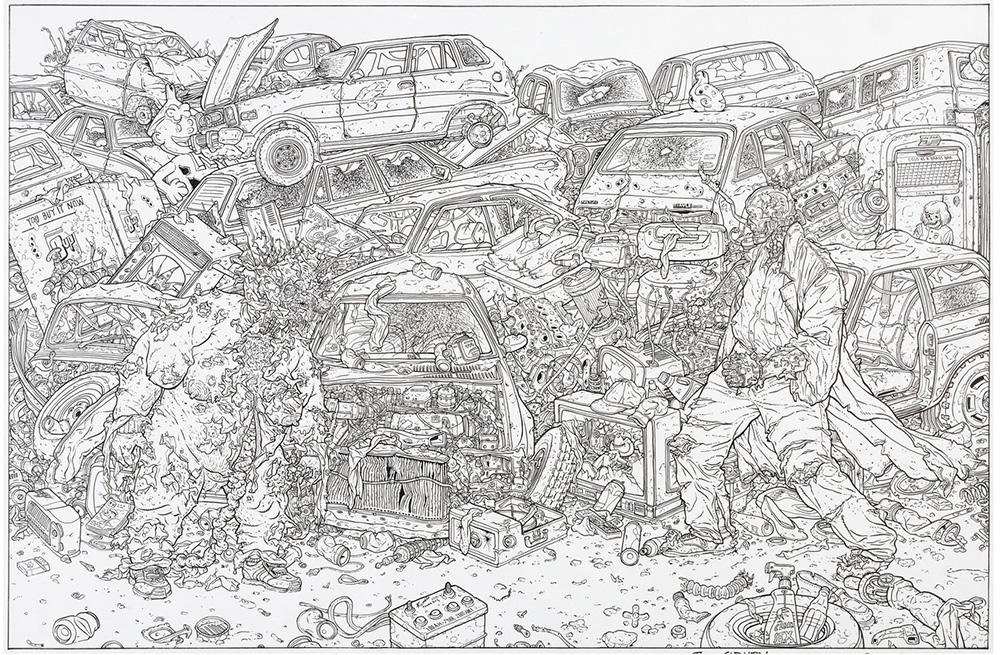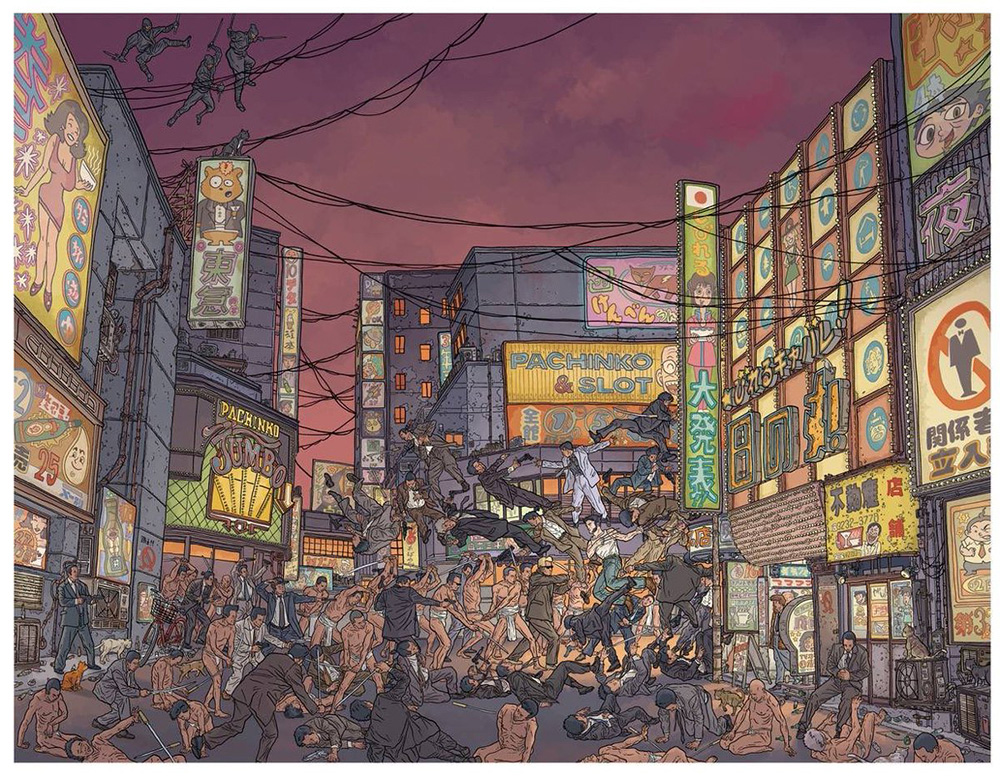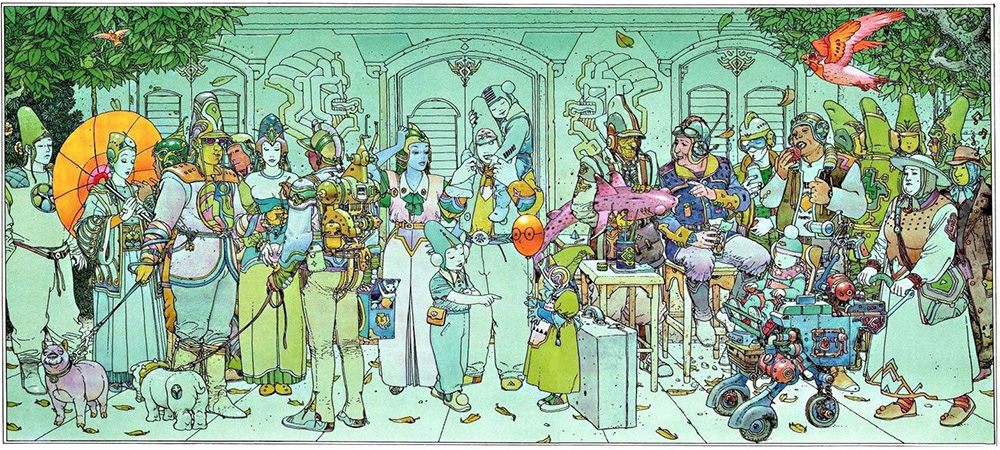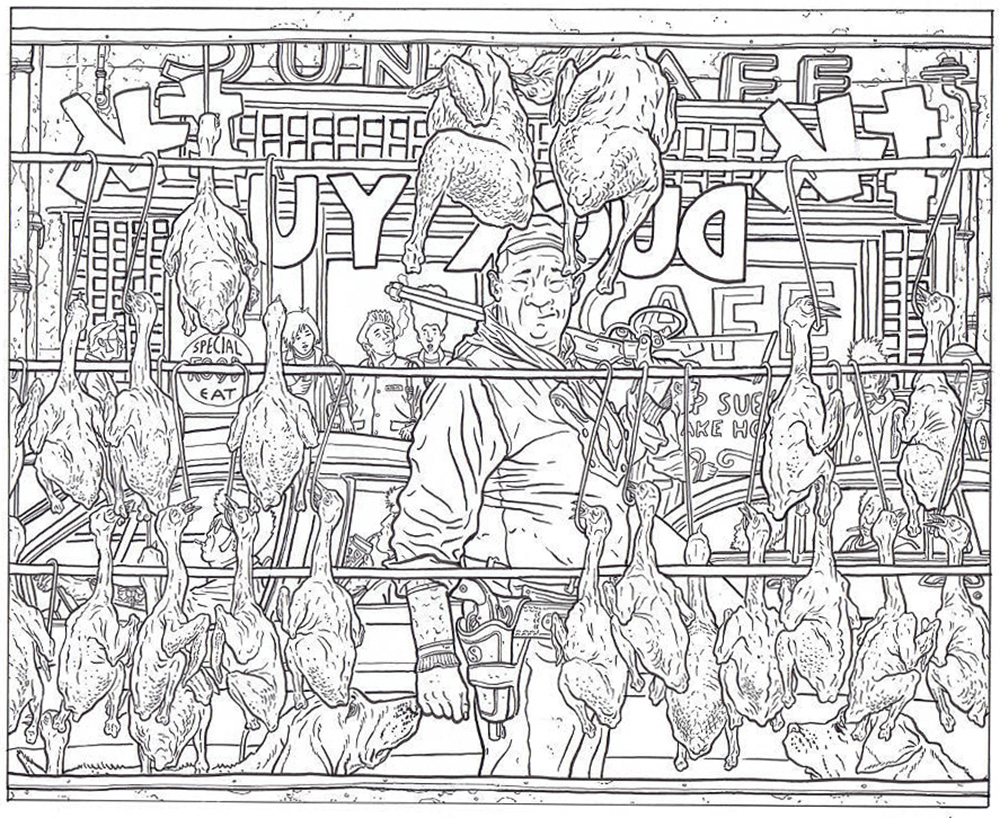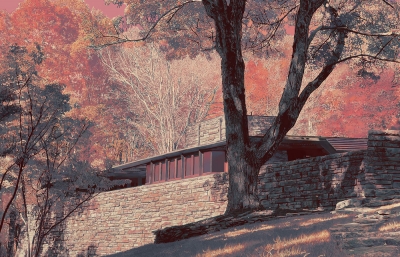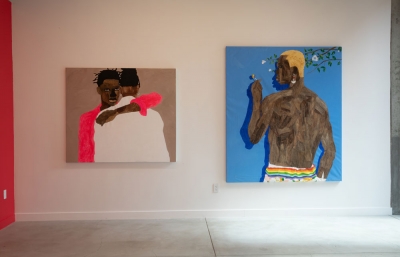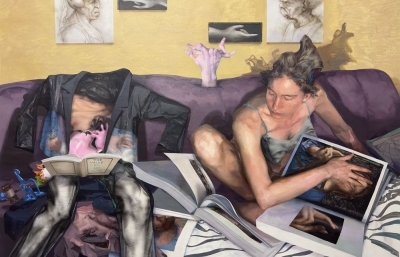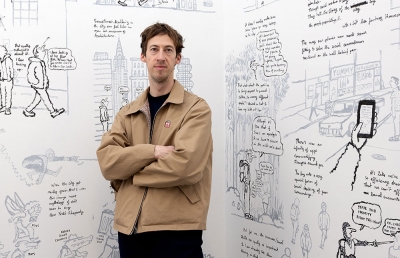Many have said "don’t judge a book by its cover," which is good advice, but we don't suggest it in the case of Geof Darrow. Geof is one of the greatest illustrators in the comic industry. He’s been around since the heydays of Hanna-Barbera but gained national attention in the early 90s with Frank Miller’s Hard Boiled. He’s been pushing the envelope in the comic industry ever since. One of his single panels can pack more action than a whole row of comics at a local comic store. If that wasn’t enough, he was also the brains behind concepting the worlds in the Matrix trilogy. If that’s not enough, he won numerous Eisner’s awards, was a protégé to other legends like Jean Giraud (aka Moebius) and Frank Miller. Geof’s work humorously touches on themes of racism, politics, religion, health, war, and sex. In his book, Who’ll Stop the Reign? Our hero cowboy even attempts to takedown contemporary culture, cell phones, and Donald Trump. We had an exclusive opportunity to sit down with Geof to talk about his style, influences, and the worlds he creates….––Iqvinder Singh
Iqvinder Singh: I feel like I spend more time on your pages than on the work of any other artist. Your panels have limited writing but you pack so many intricate details that one cannot simply skim over. This also sets you apart from other artists as well. I’m not complaining but is there a need for all this detail? Also, do you have a background in mechanical drawings or engineering?
Geof Darrow: No engineering background, but my days at Hanna-Barbera as an animator prepared me to be very precise. My specialty at that time was to draw objects; cars, trucks, everyday things, and as an animator, I had to layout everything in perspective. Each panel matters, because the details are of equal importance as the story. The details add character to not only the story as a whole but also individual panels. The details bring the story to life and adds depth as opposed to a generic or dull background.
There’s an obvious Moebius influence in your work. Tell us about your journey to France and working with Jean.
I grew up in Iowa and I wanted a change of scenery and look at the world from outside of American perspective. I was introduced to Jean by Bud Plant, years before he would be infamously known as Moebius to the rest of the world. Bud Plant was one of the original distributors of underground comics and French comics out of Grass Valley. Bud was one of the only distributor selling Jean’s titles. Bud sold me one of Jean’s Western called Lt. Blueberry solely based on a couple of drawings, and I thought they were fantastic. Around the same, Bud’s collection also introduced me to many other titles and artists including Valerian by Jean-Claude Mezieres and Bernard Prince by Hermann. So these three artists became a big influence on me. Over the years, Jean and I formed a friendship and talked about working on some stuff where he would write and I would draw. As soon as I moved to France, about two weeks later, Jean decided to move to Tahiti. He continued to return back to France on a routine basis. The worlds I create have a lot of inspiration from him. He taught me how to bring things to life with little details.
Tell us about your character-development process. Are your characters based on the stories/ideas pitched to you or are they a product of your imagination? How did you bring Shaolin Cowboy to life?
I continue to go back to Shaolin Cowboy because there’s nothing like him out there. His origins actually go back to a Japanese film. His likeness is heavily influenced by Akira Kurosawa’s Yojimbo. Just like any western, Yojimbo enters a small village in feudal Japan to make things right going against gangs and crooked men. Zatoichi was another one of my inspiration. In comparison to the Western Cowboy, Zatoichi was your everyday guy, not great looking or in good physique and on top of that, he was blind. He was a target for bullies but he knew how to handle himself. I wanted to create a character in likeness to Yojimbo and Zatoichi, and the result was Shaolin Cowboy.
What’s the future of Shaolin Cowboy?
More to come from Shaolin Cowboy in the future. There’re several other projects in the works but I can’t share any details at this time…stay tuned.
You can catch Darrow's latest work on Facebook

